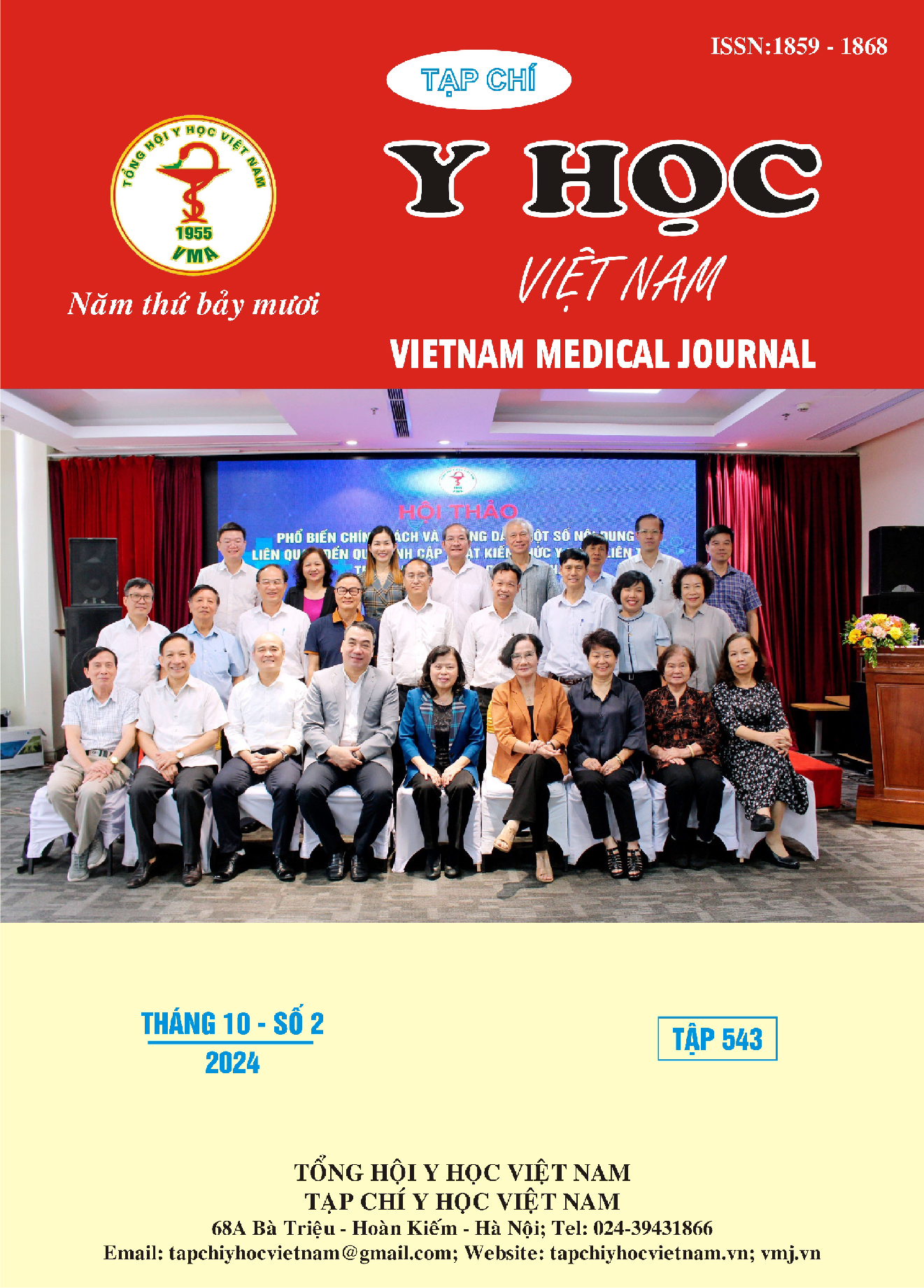EFFICACY OF RESIN INFILTRATION TREATMENT FOR INITIAL CARIOUS LESIONS OF ANTERIOR PERMANENT TEETH
Main Article Content
Abstract
Objective: This study aims to evaluate a modified resin infiltration technique. Subjects and methods: 16 patients, 97 anterior initial carious lesions (ICL) (ICDAS-1: n = 10; ICDAS-2: n = 42; ICDAS 3: n = 45) were included in the study. Before treatment, lesions were remineralized with Fluoride (3M Vanish 5% Sodium Fluoride White Varnish) and CPP-ACP (GC Tooth Mousse, 3M, USA) for 2 weeks. Treatment with resin infiltration (ICON, DMG) was performed, incorporating microabrasion (Opalustre, D.O.E) depending in the lesion extent. The etching procedure was unlimited. Standardized digital images were captured before (T0) and immediately after (T1) the intervention. The outcome included evaluation differences between (T0) and (T1) by quantitative (ICDAS) and qualitative methods ((5-point Likert Scale ranging from deteriorated (1), unchanged (2), improved but not satisfying (3), improved and no further treatment required (4), and completely masked (5)). Differences in time points with ICDAS were analyzed by using chi-square tests. Results: 16 patients (13 females, 3 males) with a mean (SD) age of 12.88 (±3.5). After treatment, only 0.3% results classified as unchanged, whereas 30% and 59,8% of the lesions were “improved and no further treatment required” and “completely masked”, respectively (Fleiss Kappa: T1 = 0.72 (substantial agreement)). Notably, ICDAS score after treatment significantly decreased (p<0.05; chi-square test). Conclusion: Modified resin infiltration technique efficiently masks initial carious lesions immediately after treatment.
Article Details
Keywords
white spot lesions, resin infiltration, anterior teeth, minimally invasive treatment.
References
2. Vo Truong Nhu N, Hung D, Ha P, Nguyen A. Management Of Clear Aligner-related Severe Enamel Demineralization With A Modified Resin Infiltration Technique: A Case Report. Dent Hypotheses. 2023;14: 66-68. doi:10.4103/ denthyp.denthyp_18_23
3. Zawaideh F. Resin Infiltration Technique : A New Era in Caries Management. Smile Dent J. 2013;9:22-27. doi:10.12816/0008318
4. Paris S, Meyer-Lueckel H. Resin Infiltration After Enamel Etching. In: Perdigão J, ed. Tooth Whitening: An Evidence-Based Perspective. Springer International Publishing; 2016:211-222. doi:10.1007/978-3-319-38849-6_10
5. Arnold WH, Haddad B, Schaper K, Hagemann K, Lippold C, Danesh Gh. Enamel surface alterations after repeated conditioning with HCl. Head Face Med. 2015;11(1):32. doi:10.1186/s13005-015-0089-2
6. Roig-Vanaclocha A, Solá-Ruiz MF, Román-Rodríguez JL, Amengual-Lorenzo J, Alonso Pérez-Barquero J, Agustín-Panadero R. Dental Treatment of White Spots and a Description of the Technique and Digital Quantification of the Loss of Enamel Volume. Appl Sci. 2020;10(12):4369. doi:10.3390/app10124369
7. Ibrahim DFA, Hasmun NN, Liew YM, Venkiteswaran A. Repeated Etching Cycles of Resin Infiltration up to Nine Cycles on Demineralized Enamel: Surface Roughness and Esthetic Outcomes—In Vitro Study. Children. 2023;10(7):1148. doi:10.3390/children10071148
8. Wierichs R, Abou-Ayash B, Kobbe C, et al. Evaluation of the masking efficacy of caries infiltration in post-orthodontic initial caries lesions: 1-year follow-up. Clin Oral Investig. 2023;27:1-8. doi:10.1007/s00784-022-04843-w


